Rinpoche, Jersey and Tara
January 9, 2020 0
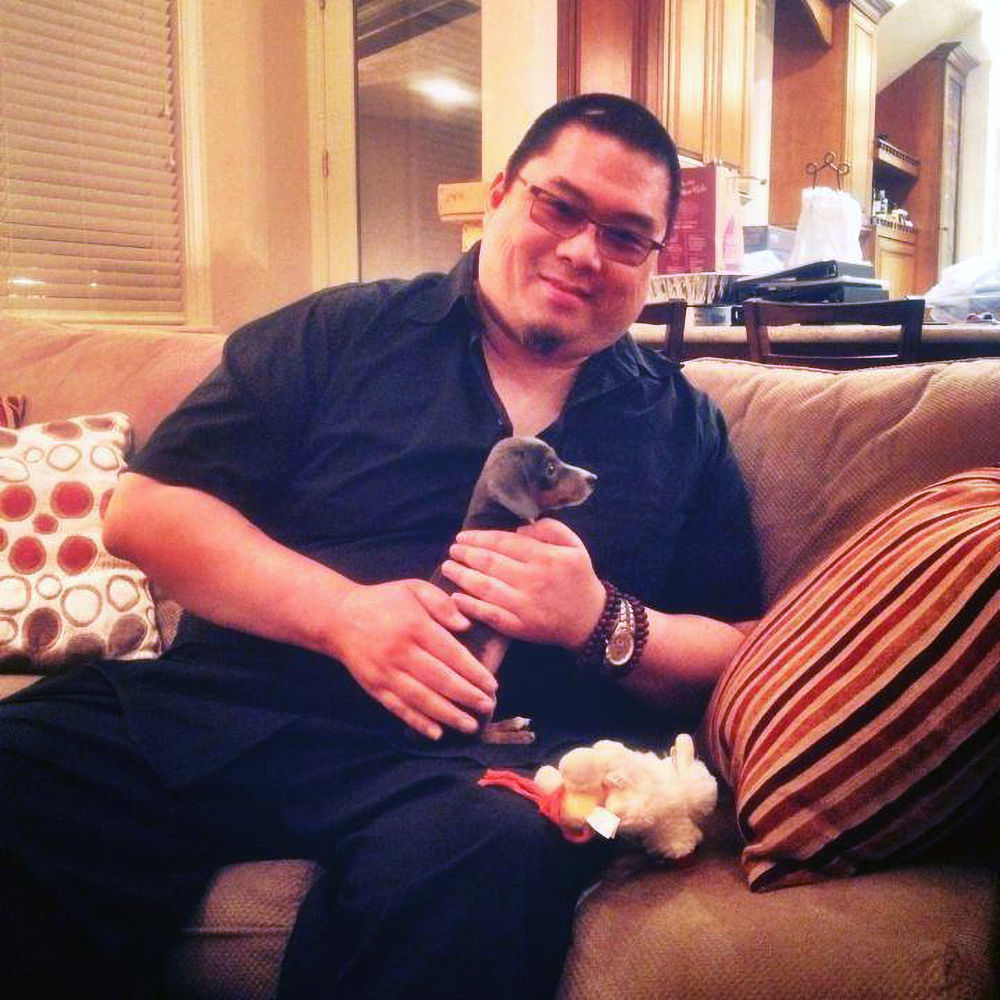
Tsem Rinpoche with Jersey, the puppy of our handyman in Los Angeles
I still remember when this photograph was taken. Our handyman was working in the house and while a few of us remained behind to observe what was being done, Rinpoche had gone out with some students. Jersey was going bananas in the house, scampering everywhere and it was tough to keep the wriggly little imp still for a cuddle (which we obviously wanted to do, because she was just so adorable!).
Then, Rinpoche came home.
Jersey, predictably, bolted towards the sound of the closing door. Upon sighting her, Rinpoche exclaimed, “She’s so cute!” and immediately knelt down to pick her up. Rinpoche sat down with her, gently stroking her head and quietly reciting Medicine Buddha‘s mantra: TAYATHA OM BEKANZE BEKANZE MAHA BEKANZE BEKANZE RANDZA SAMUGATE YE SOHA. Rinpoche blew the mantras on the crown of her head to bless her, all the while cuddling her. For the first time in a good few hours, Jersey sat completely still.
It is pretty well-known that Rinpoche loved all animals and they, in turn, loved Rinpoche too. Whether four-legged, two-legged, feathered or furred, it did not matter what breed, species or size the animal was, because Rinpoche bore an equal amount of love for all of them.
 Because of Rinpoche’s love for animals, Rinpoche built a 4000 sq ft aviary to rescue and rehabilitate abused and neglected birds that are too domesticated to be released. Students were sent to aviaries all over Asia to study how they had built their spaces, what materials they had used and so on. Rinpoche also had his students consult with veterinarians and ornithologists to get advice on designing the best habitat.
Because of Rinpoche’s love for animals, Rinpoche built a 4000 sq ft aviary to rescue and rehabilitate abused and neglected birds that are too domesticated to be released. Students were sent to aviaries all over Asia to study how they had built their spaces, what materials they had used and so on. Rinpoche also had his students consult with veterinarians and ornithologists to get advice on designing the best habitat.
Because of this, our aviary is long and low (instead of tall and narrow) so the birds have the space to really fly and stretch their wings. The floor is sand, all of their perches are made of wood, and there is plenty of foliage so smaller birds can hide, and the larger ones can stake their territory. The roof is only partially covered so they get some rain, just as they would in the rainforest.
Rinpoche also built the Dream Manjushri fish pond so that rescued fish could be released in a safe, clean environment. A separate quarantine pond was constructed so that sick fish can be treated independently from the healthy population. Once again, Rinpoche had aquatic plants added so the smaller fish can hide. Rinpoche would often request and receive updates on the status of the plants, to ensure adequate oxygen for the fish.
Rinpoche even rescued worms, slugs, snails; if there was a fly, Rinpoche would insist on trapping it to be released elsewhere.
But most of all, Rinpoche had a soft spot for dogs and always ensured that he was prepared to help them. They did not even have to be Rinpoche’s dogs because it was not about who they belonged to. It was about the fact they needed help, and Rinpoche always went all the way with caring for them. Many of Rinpoche’s students have since imitated Rinpoche’s example, taking to carrying dog supplies in our cars. This list includes:
- Dry and wet dog food for adults and puppies
- Bottles of water
- Large, compostable bowls to serve the food in. The deeper, the better because it meant we could leave behind more food and water
- Forks, to get the wet food out of the tins and break it up
- Ziploc bags, to seal the tins and bags once emptied. Wet food can get stinky!
- Wet wipes
- Torch light
- Protector rice
- Blessed water
- A few of us even carried light sedatives, just in case we came across an injured stray that needed to be rescued.
Whenever we went out, the Ladrang cars would have to be stocked with these items. It was not uncommon for us to stop in the middle of our journey, pull over to the side of the road and spend the next hour trying to coax a dog to eat. It did not matter if it was a small country road or a major highway, and it did not matter if it was midday or midnight – as long as there was a stray to be fed, we could be sure that we were going to stop.
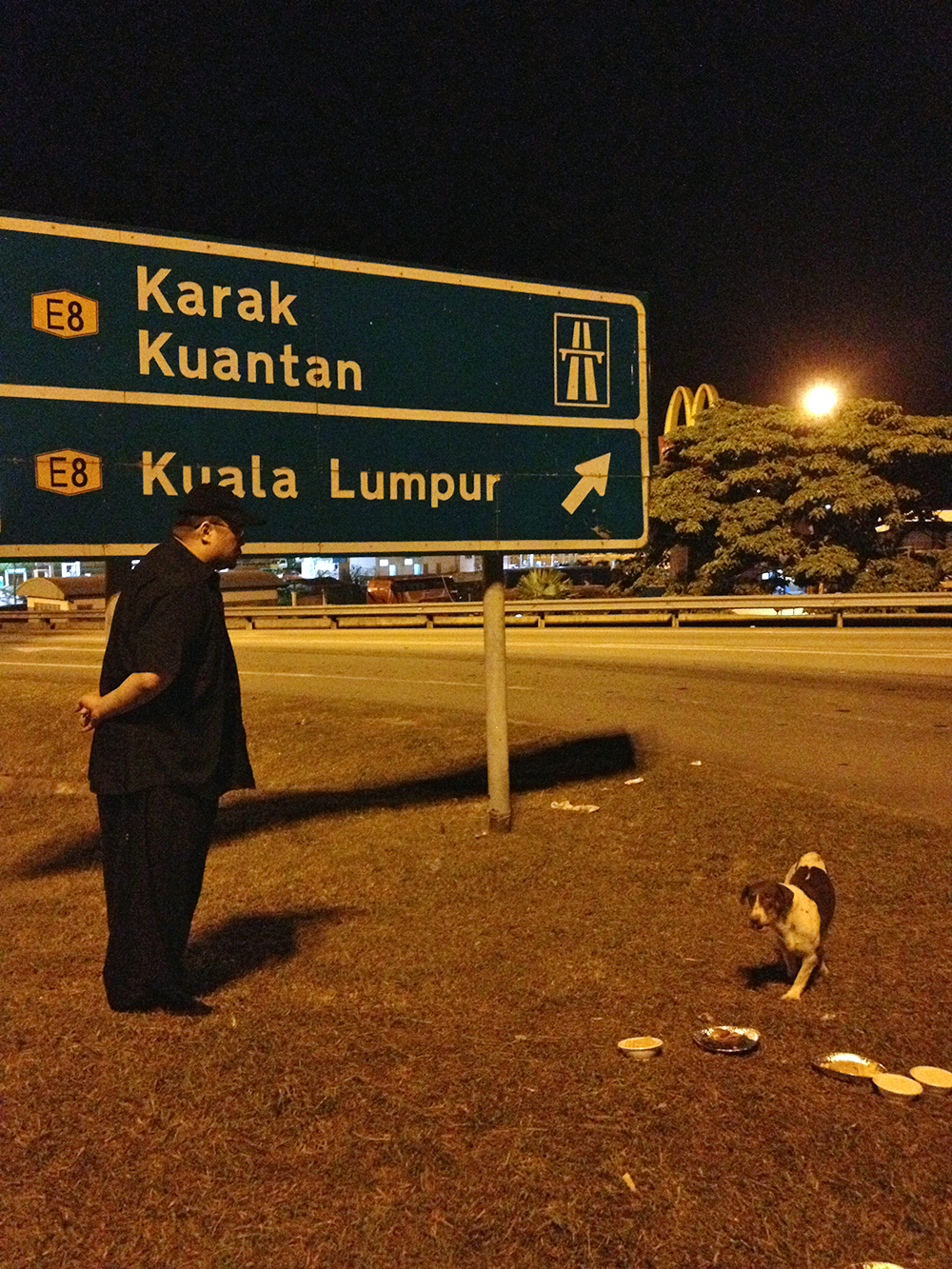
Rinpoche had seen her running by the side of the road, a tiny white speck in the darkness. Somehow, in the darkness, Rinpoche had also seen that she was wounded. That was enough for Rinpoche to ask everyone to pull over to extend medical assistance to her.
And it was always the mothers whom Rinpoche was especially concerned about, because they would need to feed their litter. The skinnier they were, the more concerned Rinpoche would be about them.
So much care and consideration was put into caring for them. Rinpoche taught us to crouch low, to never approach from the rear, to avoid making loud noises, and to keep our hands by our sides and avoid fast, jerky movements. Rinpoche taught us to recite mantras out loud, and to blow mantras into their food and water. Rinpoche taught us to place the food upwind from them, so they would easily smell the food and be tempted to it.
How did Rinpoche come to all of these conclusions? By observing because, ultimately, Rinpoche cared enough to observe, in order to deliver help to a suffering being in a manner they would accept more quickly.
Rinpoche once said that humans and animals have very similar reactions. This was expressed during a conversation about Tara, a stray that had one day turned up quite literally on Rinpoche’s doorstep. No one knew where she came from or how she had gotten there, but she had somehow ended up at Rinpoche’s front door.
Despite not knowing where she came from, everyone knew one thing about her – she was young and terrified. Moving too fast caused her to bolt; raising our hands above our waists would instantly result in her tail between her legs, cowering in fear. Her eyes would widen whenever there was a loud noise, whether it was someone’s voice or a passing truck.
She was just plain suffering and never at peace. Seeing this, Rinpoche immediately took to her and was determined to help her to heal. Rinpoche said the way Tara behaved was just like a traumatised human. Some of us are raised in angry, abusive environments and when we are older, we automatically equate raised voices with anger (as opposed to, say, excitement). When we hear loud voices, some of us react in the same way Tara used to, by cowering or shutting down. Other humans might react by meeting anger with anger, like how some dogs snap and bark at the source of a loud sound.
What changed Tara? Patience and kindness. For weeks, one of Rinpoche’s students, Beatrix, showered Tara with love. Every day, she would visit Tara at Rinpoche’s front door and feed her. It was frustrating because at first, it seemed like no matter how much love was shown, Tara did not respond to the love and would still cower or run. When Rinpoche saw how deep the trauma ran, Rinpoche immediately devised a new tactic – doing everything Tara feared or hated, but immediately rewarding it with a treat.
So Rinpoche would shout her name then give her a treat, or Rinpoche would jerk towards her before giving her a treat. It was weeks before Tara responded, realising that loud noises and jerky movements did not mean anything bad. In fact, if she could tolerate the things she hated, she would be rewarded for it. And so over time, because of Rinpoche’s compassion to observe Tara and think of a new method, because of Beatrix’s perseverance and compassion, Tara became the happy and loving dog she is today.
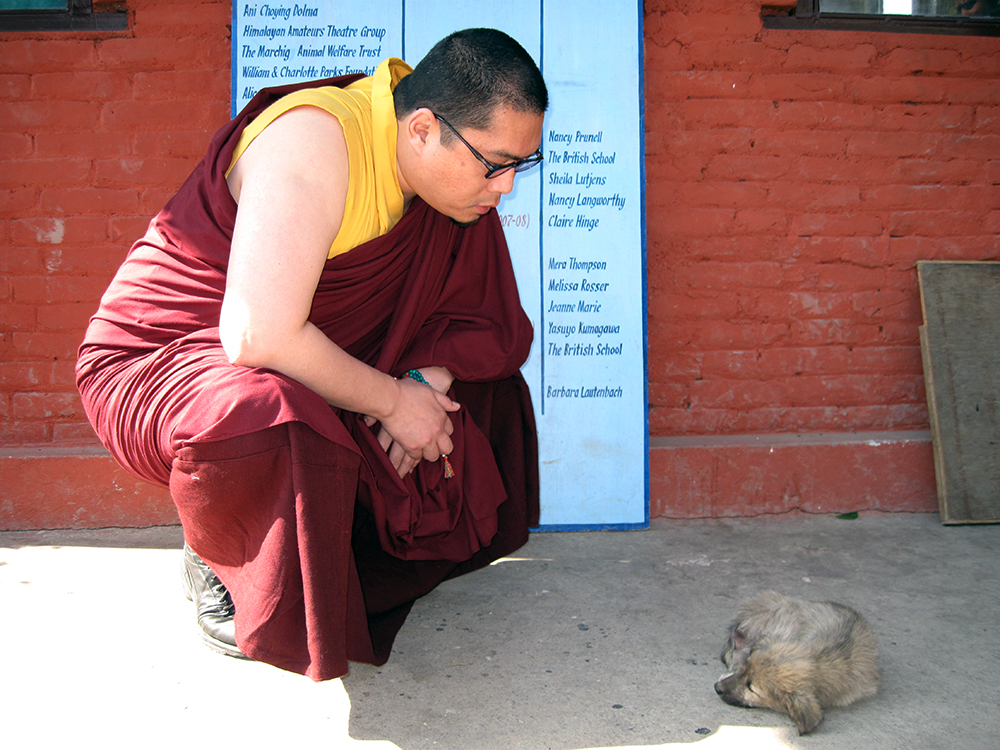 It does not matter what form we have; whether human or dog, the mind is the mind, and it is going to react to trauma or love in the same way. Sometimes, when someone or something is especially traumatised, it becomes necessary to show love and frequently, that love has to be combined with patience. It behooves us to practise the compassion necessary to show this love even in the face of rejection or a painful experience that we cannot understand or have no insight to. Because when we want to help someone, it should not be about us but about them.
It does not matter what form we have; whether human or dog, the mind is the mind, and it is going to react to trauma or love in the same way. Sometimes, when someone or something is especially traumatised, it becomes necessary to show love and frequently, that love has to be combined with patience. It behooves us to practise the compassion necessary to show this love even in the face of rejection or a painful experience that we cannot understand or have no insight to. Because when we want to help someone, it should not be about us but about them.
Are we trying to heal them for their sake, or for ourselves? When we help others for their sake, with no thought of self-benefit whatsoever, then it becomes easier to persevere when obstacles arise. We are less likely to give up because we know by giving up, they will suffer and so we become willing to tolerate more, to suffer more for their happiness. As time passes, we find these ‘burdens’ become lighter. We find that we are able to bear more and as lifetimes pass, that wish to benefit others, come what may, becomes bodhicitta. The same bodhicitta that compelled Rinpoche to always think “How can I help you?” with every sentient being who came into Rinpoche’s orbit.
To my Lama, who is one with Heruka, we look forward to welcoming you home soon.
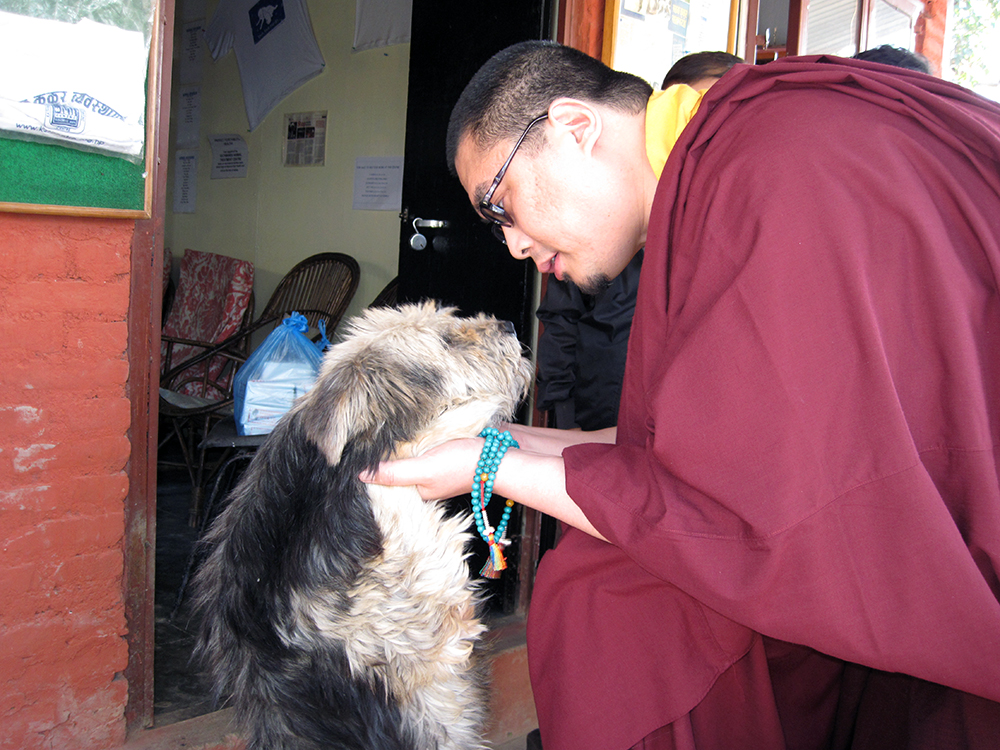
Rinpoche with Lucy, one of the dogs at Kathmandu Animal Treatment (KAT) Centre. They are a shelter that rescues and treats street dogs in Kathmandu, Nepal. To support their work, Rinpoche sponsored many items on their wish list, as well as a new, large signboard for their shelter. Rinpoche wanted to help make them more visible so they would be able to garner more attention and support for their efforts.
Recent Posts
Subscribe to Blog
Categories
Archives
Visitors by Country
| Total Pageviews: | 1 |
|---|

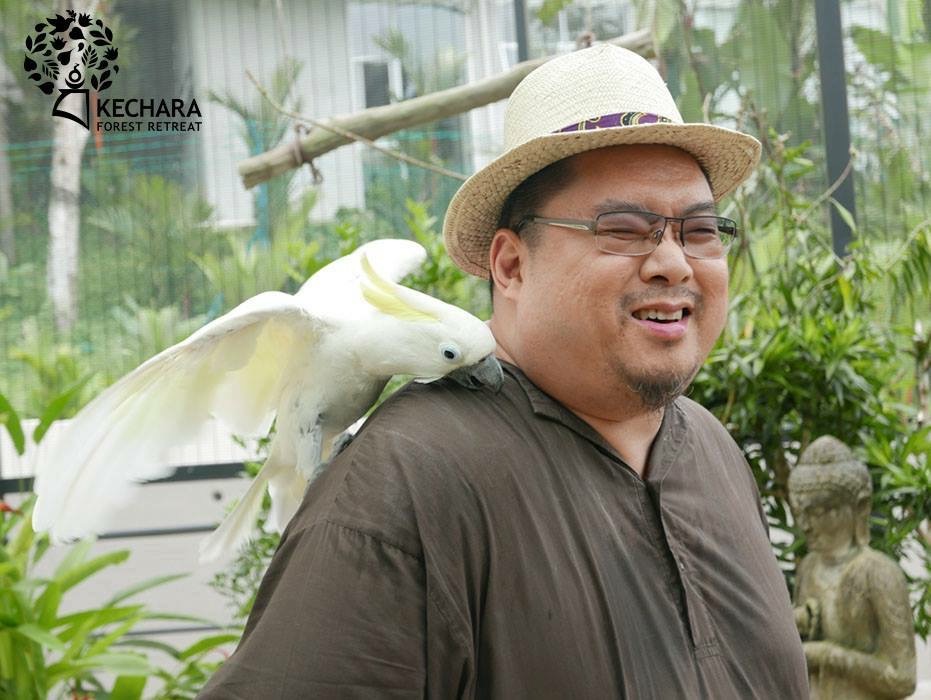

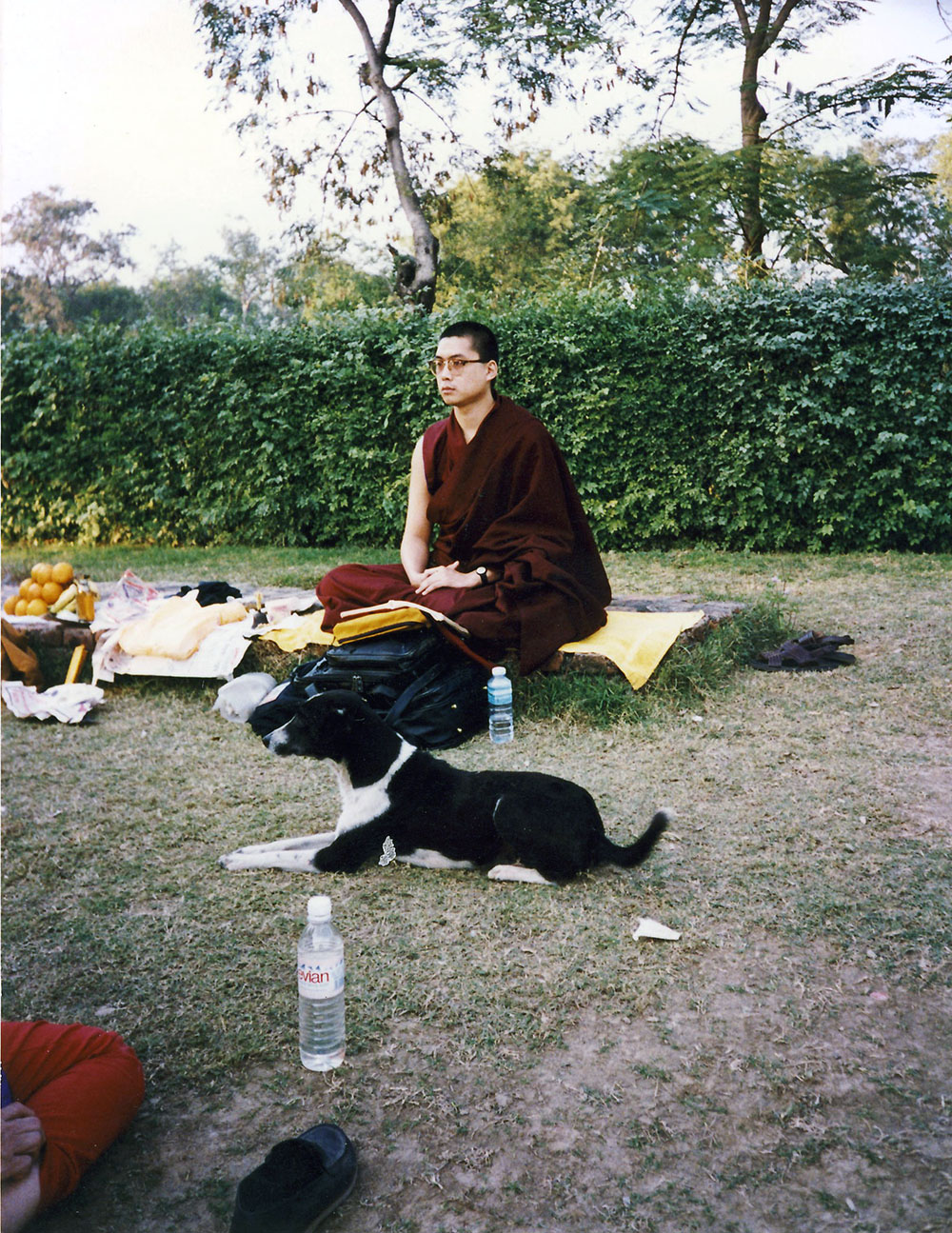
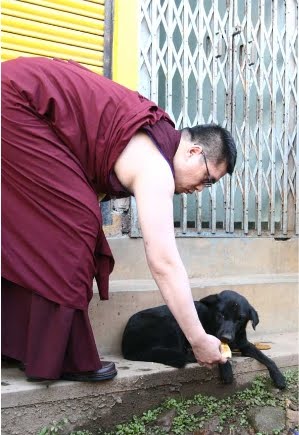
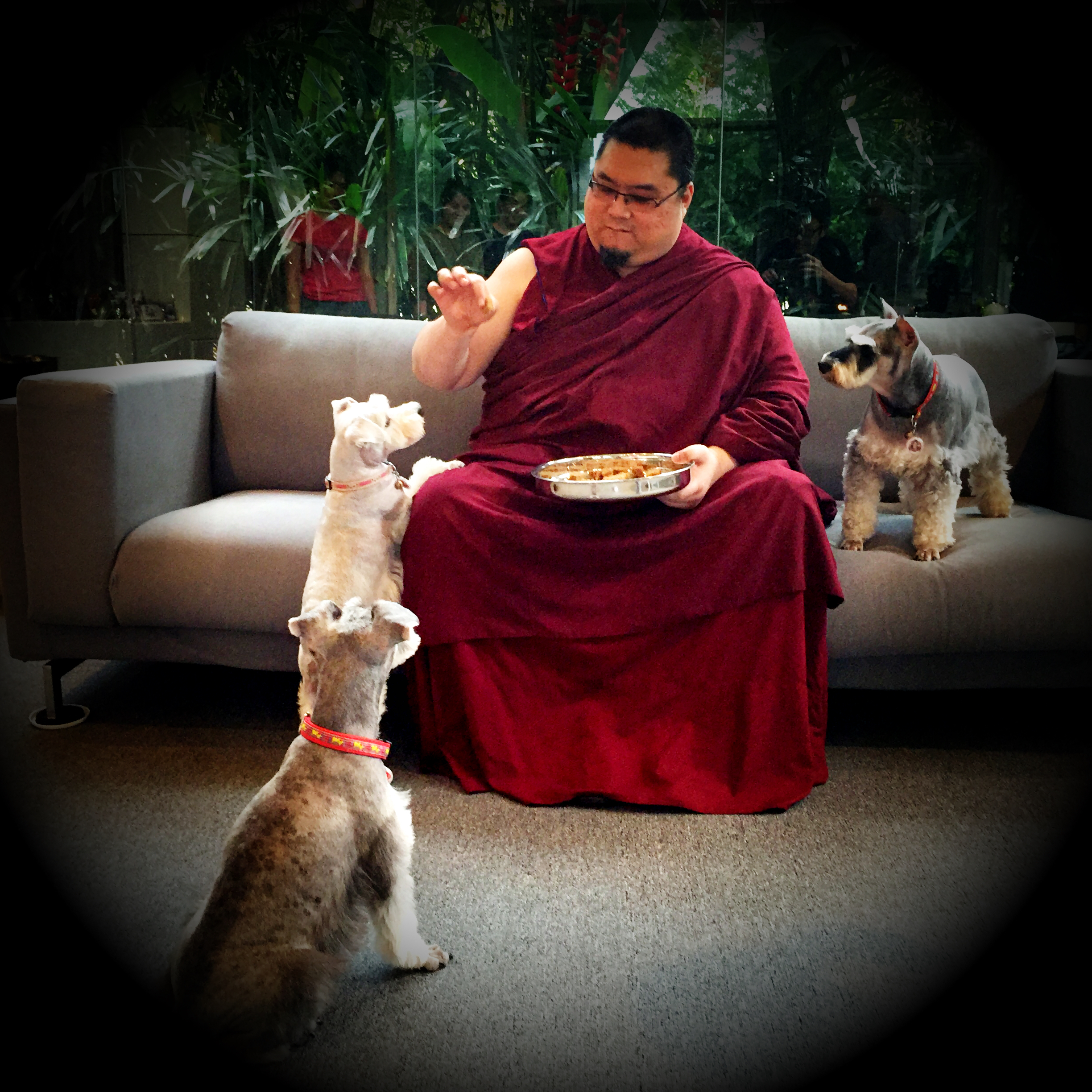
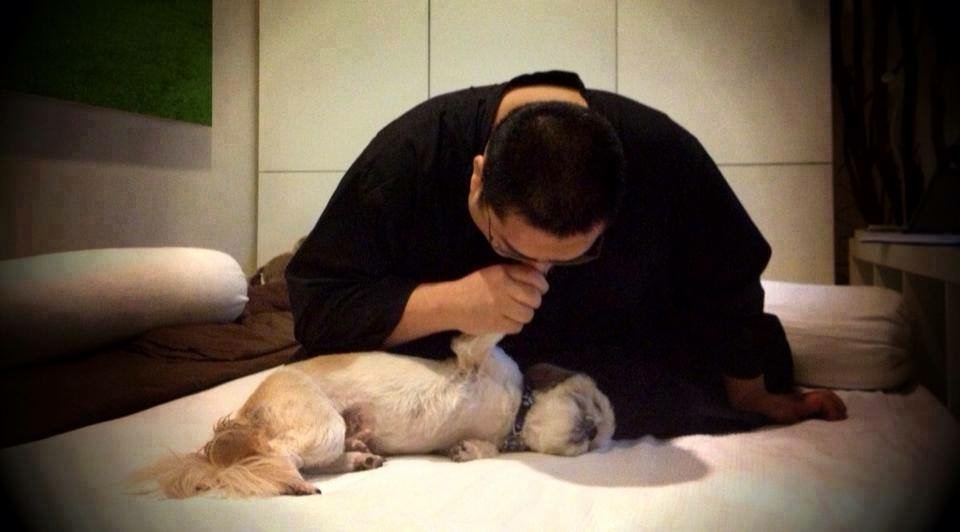
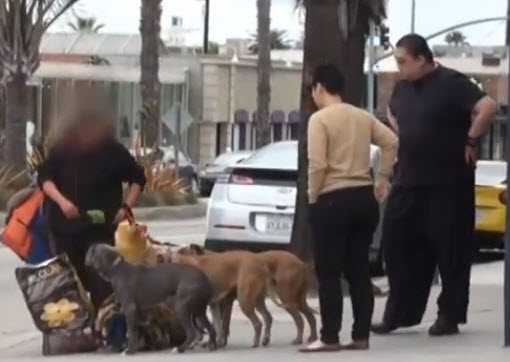



Leave a Reply